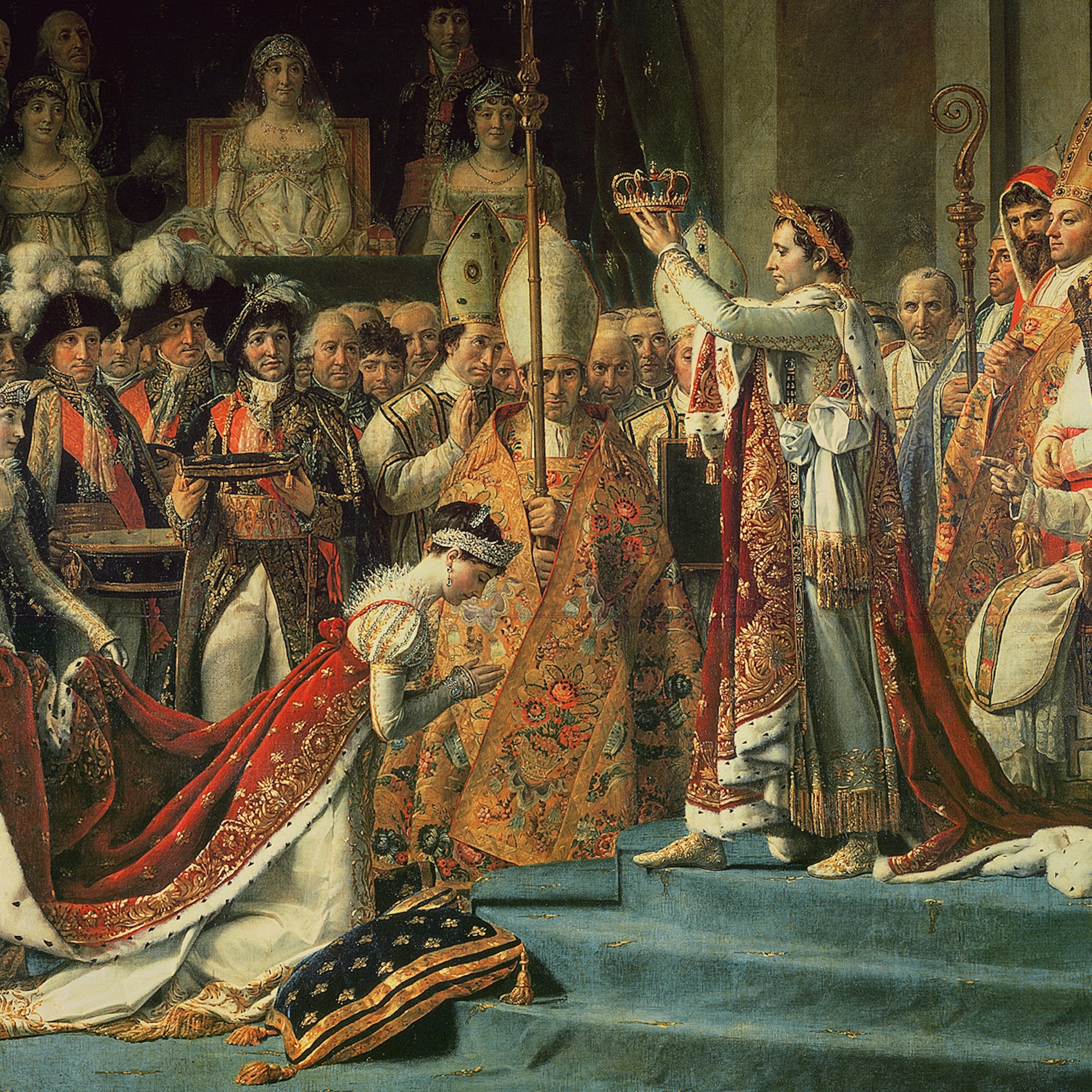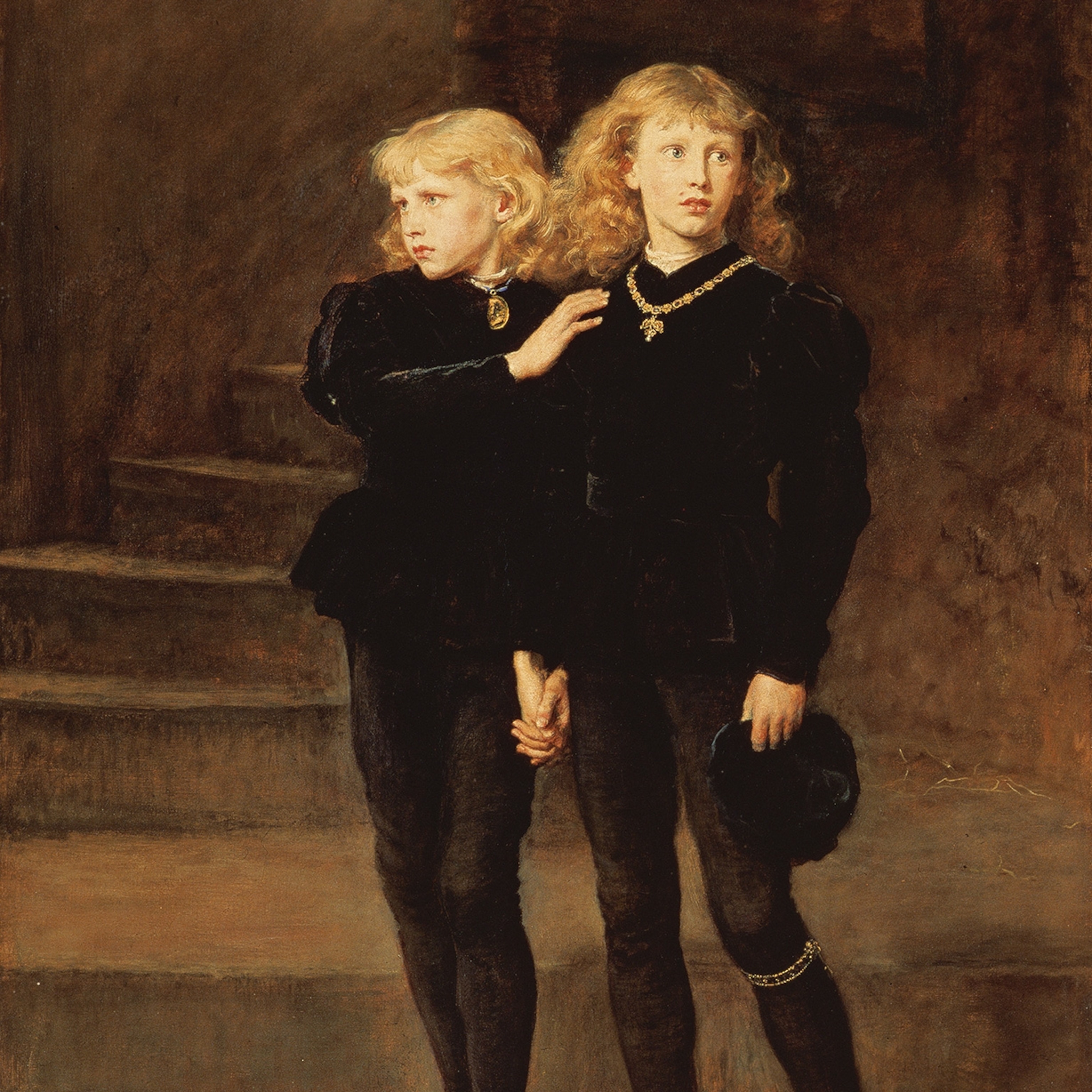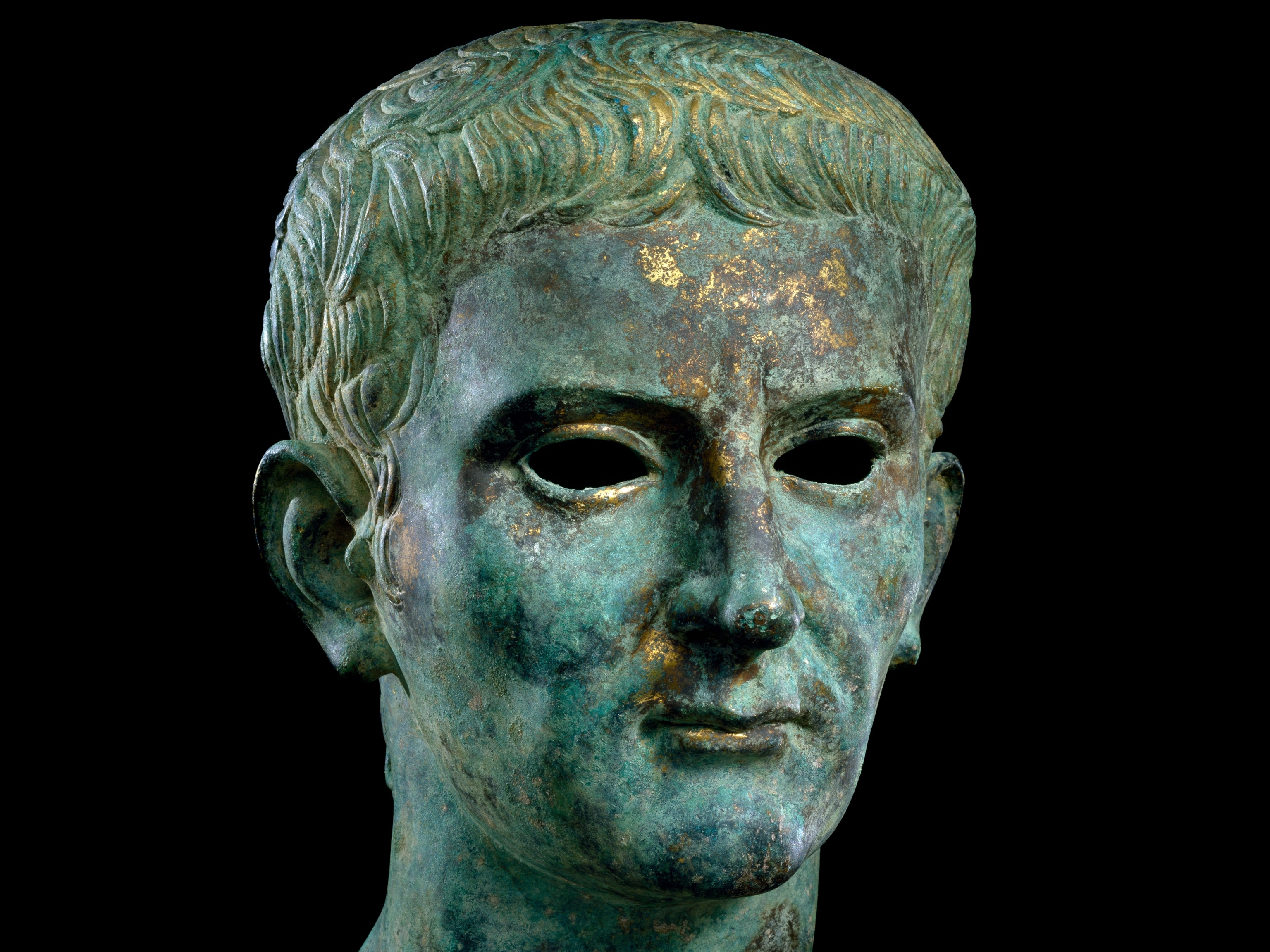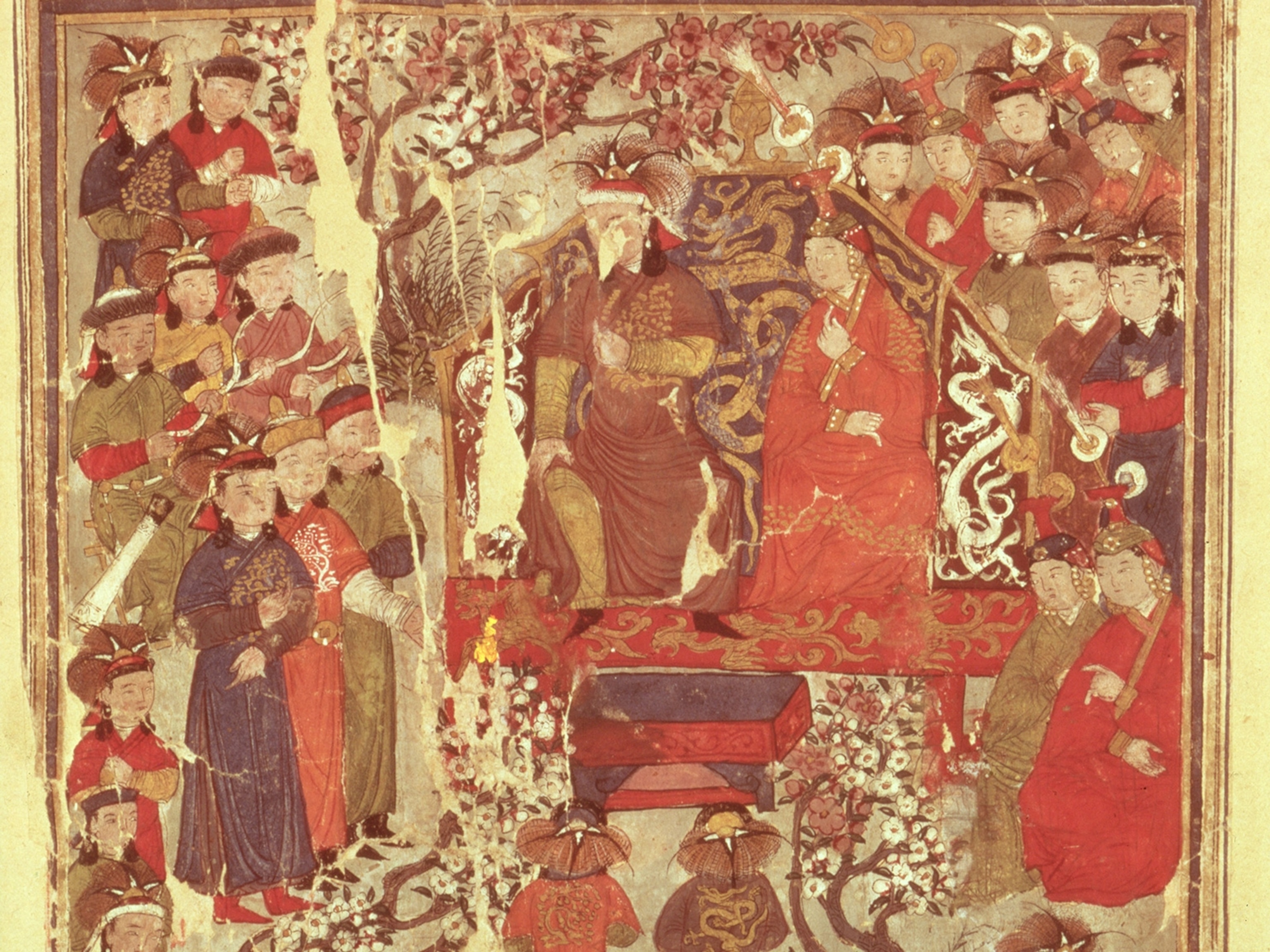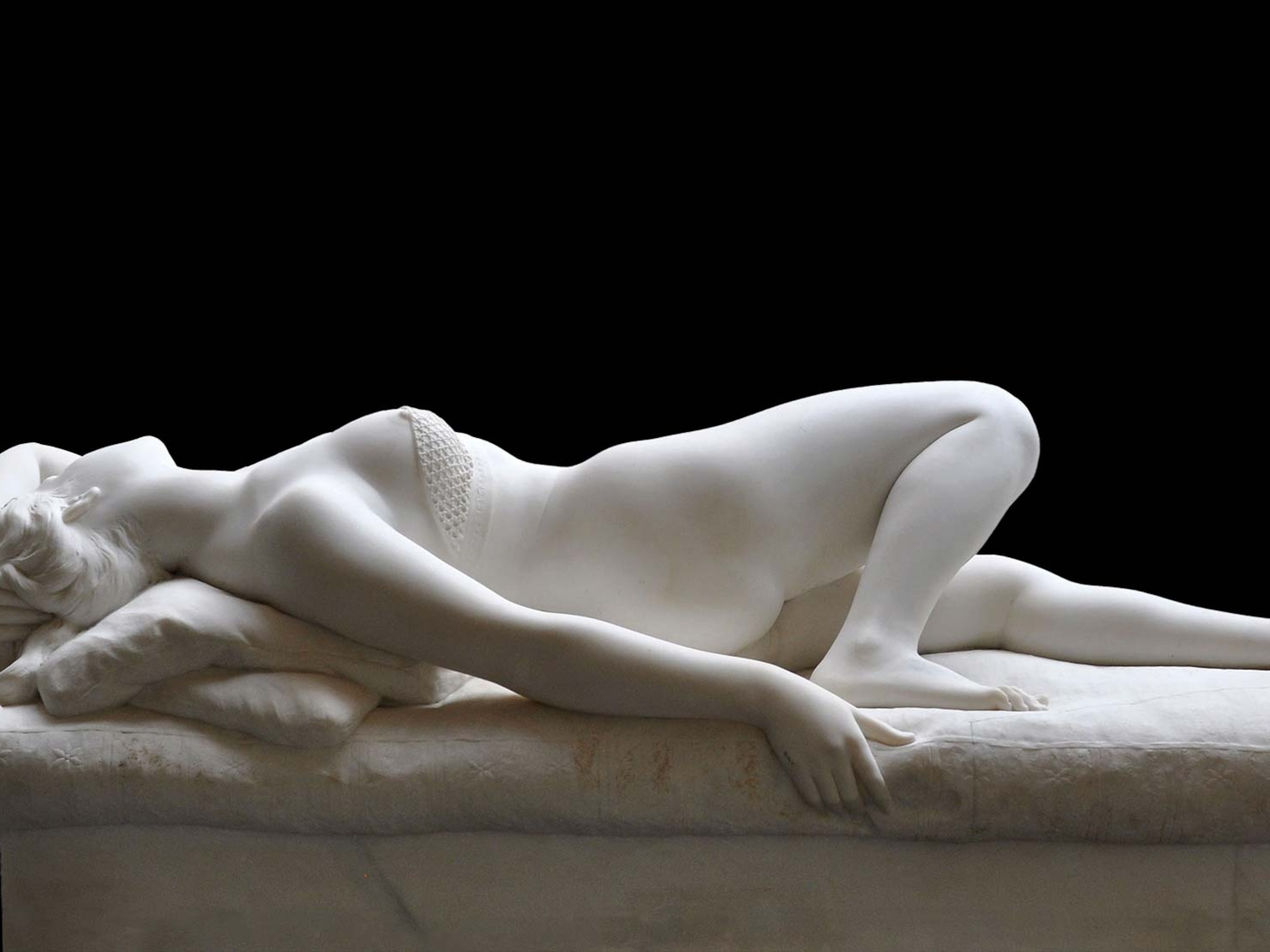The alleged affair that started a century-long war
When infidelity rocked the Capetian dynasty in France, princesses were locked away and knights were skinned alive.
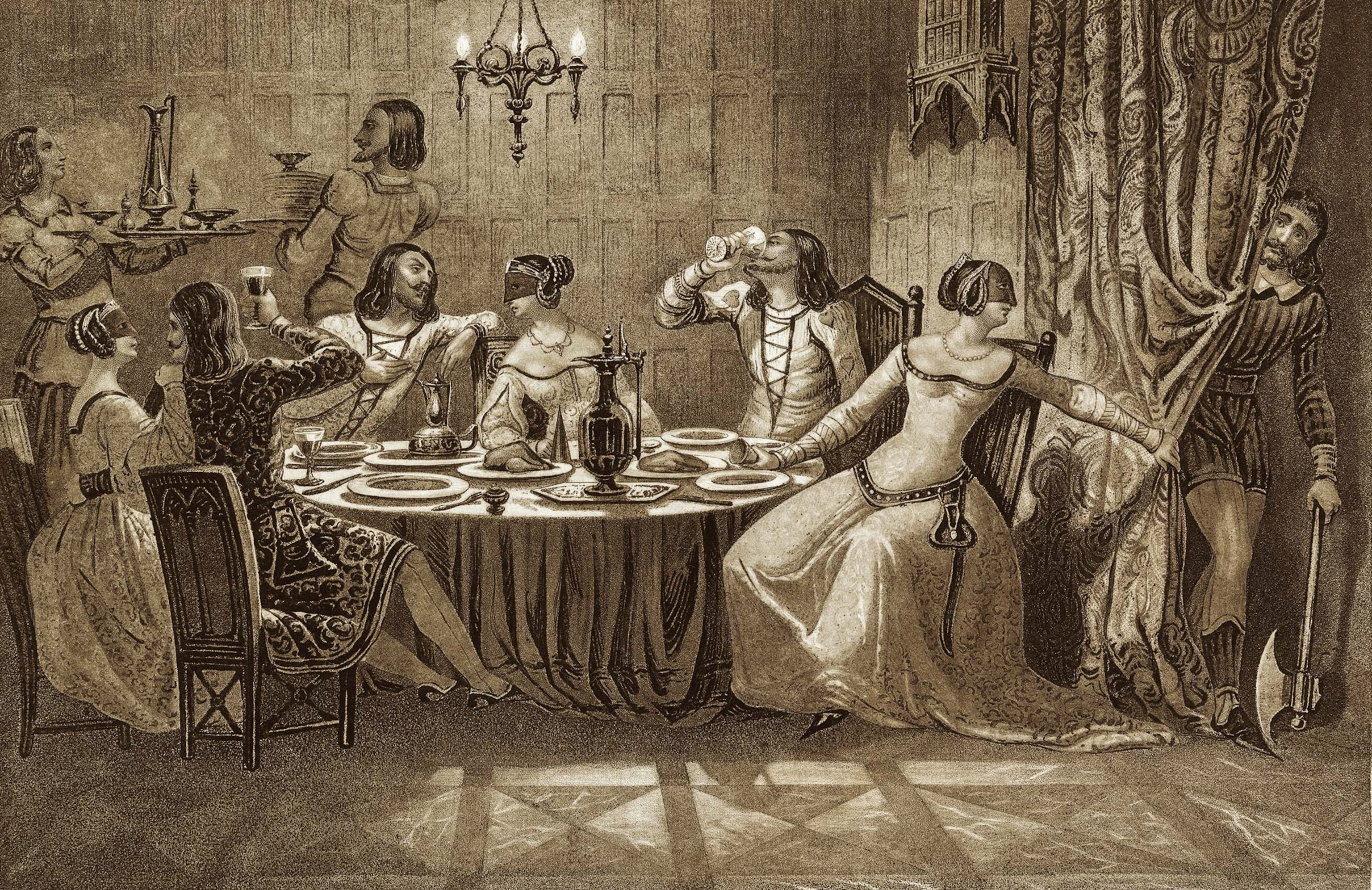
“Heavy is the head that wears the crown,” wrote William Shakespeare. For three young women in the early 1300s, being the daughters-in-law of a king could be just as burdensome, especially when the sovereign was the ruthless Philip IV of France.
Like many kings before him, Philip IV was focused on the question of his succession. His dynasty, the Capets, had ruled France since the 900s, and to ensure its survival, Philip made strategic marriages for his children to secure alliances and heirs.
His three sons married French noblewomen, and his daughter, Isabella, wed King Edward II of England. But all his plans would come undone in 1314, when his children and their spouses were engulfed by the Nesle Tower affair. The scandal not only led to torture, imprisonment, and the possible murder of one of the princesses; it also led to a succession crisis in France that sparked the ruinous Hundred Years’ War.
(How Joan of Arc turned the tide in the Hundred Years’ War.)
Illicit affairs
The wives of all three of King Philip’s adult sons hailed from the neighboring region of Burgundy. Louis (the future Louis X) married Margaret, daughter of the Duke of Burgundy. Philip (the future Philip V) married Joan, daughter of the Count of Burgundy. Finally, Charles, (the future Charles IV) married Joan’s sister, Blanche of Burgundy.
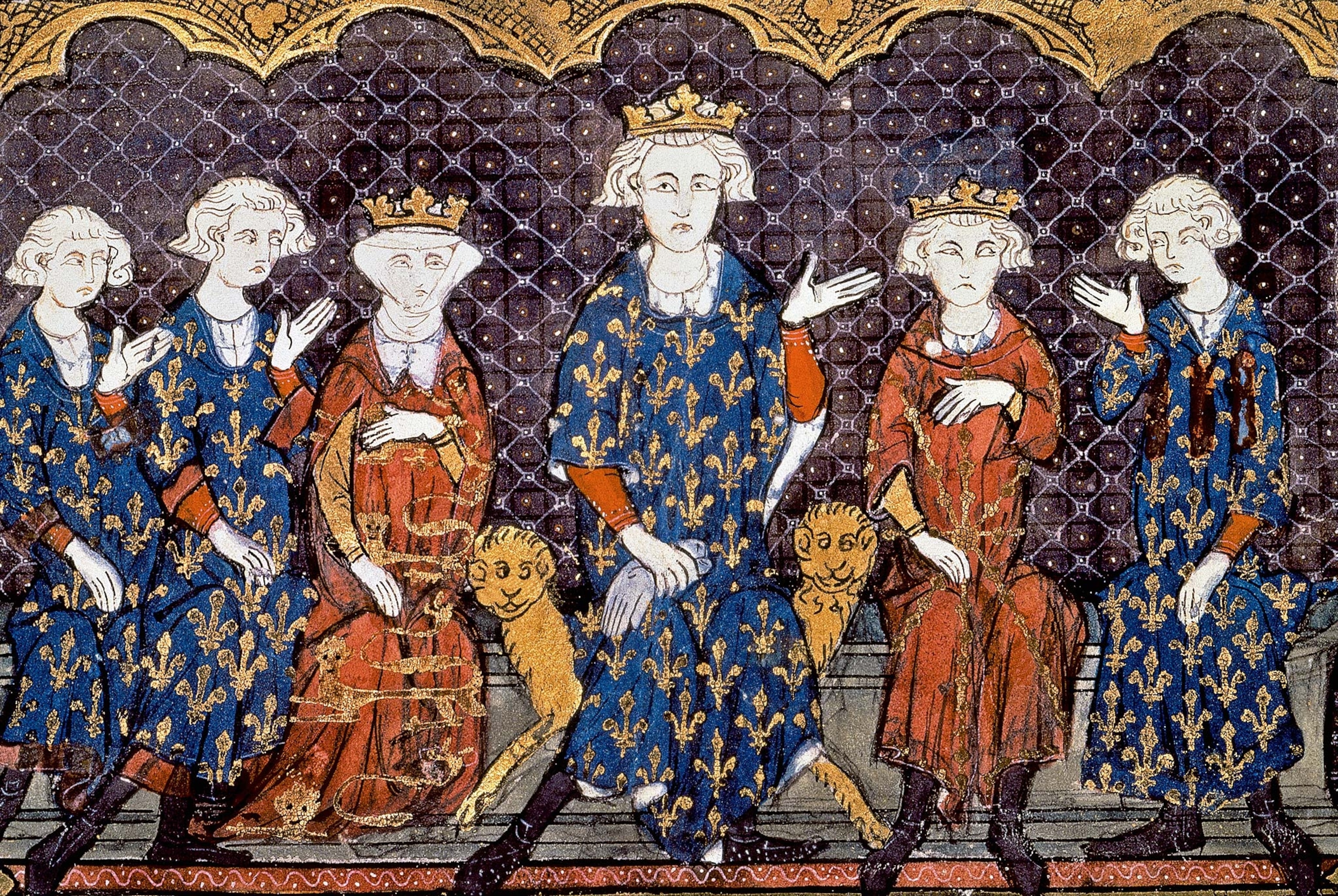
Only one of these marriages is recorded as being happy. Even by the standards of dynastic marriage, Margaret’s union with Louis was cold. Charles was overbearing with Blanche. Only Joan appeared to have been happily married to Philip, a bond that would later spare her from the miserable fates of her sisters-in-law.
The scandal began in 1313 when Isabella, King Philip’s daughter, visited Paris with her infant son, the future Edward III of England. Several chronicles describe a puppet show at which Isabella gave embroidered silk purses to her three sisters-in-law, Margaret, Blanche, and Joan.
On a later visit home, Isabella noticed that two knights accompanying her sisters-in-law—brothers Philippe and Gautier d’Aunay—were wearing those gifted purses on their belts. It is said Isabella saw these purses as a sign of an illicit liaison between the knights and her sisters-in-law, and she alerted her father in 1314.
On their own, the purses were unlikely to have been enough proof of adultery. Although during the Middle Ages, when women gave such presents to knights as favors, it was a practice often seen as a display of affection. But the king would need stronger evidence than that.
Philip IV ordered men to spy on his daughters-in-law and the two knights. Soon enough, he had reports that the three women were meeting with the two men at the Tour de Nesle, a guard tower on the Seine River in central Paris. All three princesses were seen coming and going at the tower, but only two of them—Margaret and Blanche—were having affairs with the knights.

The two d’Aunay brothers were arrested and imprisoned. Under torture, they confessed to the affair on April 19, 1314. Margaret and Blanche were imprisoned in the Château Gaillard fortress in Normandy. Although Joan was not involved sexually with the knights, she was accused of being an accomplice and incarcerated at Dourdan, near Paris. Nevertheless, she retained the support of her husband, who never disowned her.
(Inside the decadent love affair of Cleopatra and Mark Antony.)
Weighing the facts
Most historians believe that the affairs did happen, yet there is disagreement among scholars. Numerous primary sources documented the Nesle Tower affair. Among them are the Chronicles of the Count of Flanders; the Chronicle of the Kings of France by Guillaume de Nangis, a monk near Paris; and the Scalacronica, written by an English knight. These contradict each other in terms of chronology, so it is difficult to be sure of what events happened when. Cross-referencing these chronicles with royal household accounts, however, presents a rough time line.
One sticking point for numerous historians is that the d’Aunays’ resistance to torture lasted for days, leading some to think they were falsely accused and were trying to maintain their innocence. The Chronicles of the Count of Flanders put forward an interesting conspiracy theory: The princesses and the knights were innocent and framed by Philip IV’s principal minister, Enguerrand de Marigny. He was later accused of sorcery to harm the king and hung. Most historians, however, accept that Margaret and Blanche had committed adultery.
(Scandal and feuds are why you've never heard of these 7 geniuses.)
Taking liberties

Princesses and queens
After being condemned by the king in a secret trial, the knights were executed. Accounts vary on the exact details of their deaths, but all are very gruesome. Some say they were skinned alive and that their “manly parts” were cut off. They were decapitated and their remains were publicly displayed.
The women’s fates were not as violent as the knights’. Margaret and Blanche were tried and found guilty of adultery. Their heads were shaved and both were sentenced to life in underground cells at Château Gaillard. Because Joan knew about the affairs, she was punished with house arrest at the Château de Dourdan.
The heaviest penalties
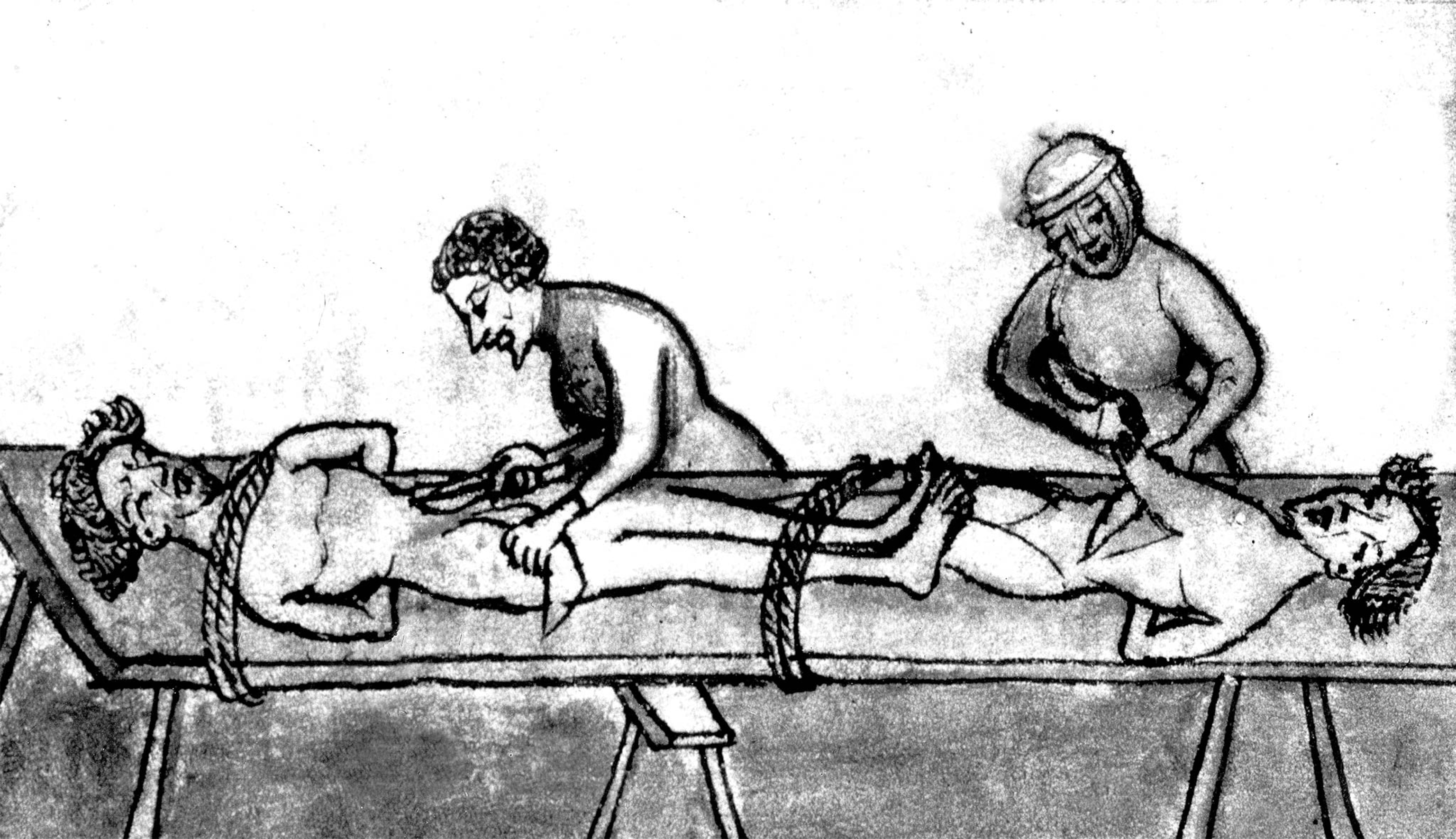
Margaret remained in prison, even when she became the queen of France. Philip IV died in November 1314, and Margaret’s husband succeeded him as Louis X. But by April 1315, she was dead, and Louis remarried just days later, creating suspicion that Margaret had been murdered—possibly strangled.
After eight years at Château Gaillard, Blanche was released. Her marriage to Charles remained intact until May 1322, when the pope granted an annulment. Her ultimate fate is unknown. Many believe she spent her final years at a nunnery in the Abbey of Maubuisson, where she died around 1326.
Only Joan escaped long-term punishment. Philip stood by her and secured her release. When he began his reign as Philip V in 1317, Joan became queen. Her husband died in 1322, and she outlived him by eight years, dying in 1330. But the shadow of the Nesle Tower affair fell over Philip V too, and the Capet line edged closer to extinction.
(Love ‘Succession'? These 5 places tell stories of historic family feuds.)
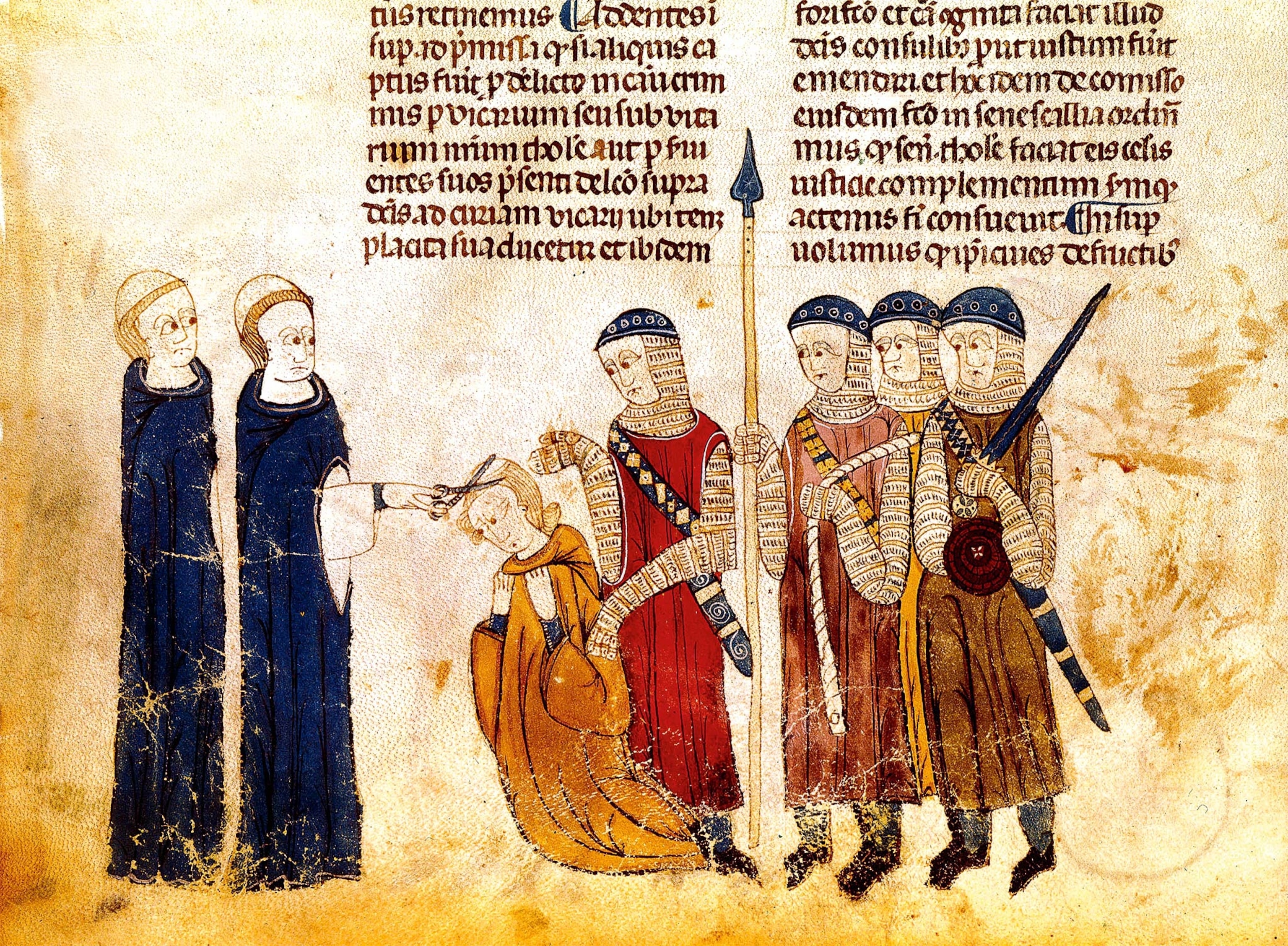
All of Philip IV’s machinations to secure his dynasty lay in tatters. When Louis X died in 1316, his infant successor, John, lived only five days.
Philip, Joan’s husband, was eventually crowned as Philip V, but only after usurping his niece. In order to justify seizing the throne from her, Philip invoked the ancient Frankish Salic Law that barred a woman from the throne. In an ironic twist, Joan and Philip V only had daughters, so adherence to Salic Law meant that Philip V’s daughters had to be passed over for his younger brother, Charles, who took the throne in 1322.
After Charles annulled his marriage to Blanche, he did remarry but failed to produce a son. When Charles IV died in 1328, the direct male line of the Capetian dynasty was extinguished with him.
Charles IV’s cousin acceded to the French throne, but this claim was contested by none other than Charles’s English nephew and son of his sister, Isabella, the principal informant of the affair. The competing claims of her son Edward III of England and her cousin Philip of Valois led to the Hundred Years’ War, whose destruction was compounded by the Black Death in the 1340s. Historian Barbara Tuchman famously called the era “the calamitous 14th century,” due in no small part to the events of the Nesle Tower affair.
You May Also Like
Go Further
Animals
- What would the world look like without mosquitoes?What would the world look like without mosquitoes?
- Social media loves to villainize dolphins. Here's why it's wrong.Social media loves to villainize dolphins. Here's why it's wrong.
- How did wolves evolve into dogs? New fossils provide cluesHow did wolves evolve into dogs? New fossils provide clues
- This unorthodox method is saving baby parrots from extinctionThis unorthodox method is saving baby parrots from extinction
- A deadly disease that affects cats big and small found in U.S.A deadly disease that affects cats big and small found in U.S.
Environment
- ‘Corn sweat’—and other weird weather phenomena—explained‘Corn sweat’—and other weird weather phenomena—explained
- A sea tornado sank a yacht. We might see them more often.A sea tornado sank a yacht. We might see them more often.
- How billions of dollars are revolutionizing ocean explorationHow billions of dollars are revolutionizing ocean exploration
- Where to go stargazing in Chile according to a local astronomer
- Paid Content
Where to go stargazing in Chile according to a local astronomer
History & Culture
- Did Babe Ruth really ‘call’ this legendary home run?Did Babe Ruth really ‘call’ this legendary home run?
- The real history behind the legend of China's Monkey KingThe real history behind the legend of China's Monkey King
- How new technology transformed the American workforceHow new technology transformed the American workforce
- This secret Civil War sabotage mission was doomed from the startThis secret Civil War sabotage mission was doomed from the start
- This rare burial site reveals secrets about the Sahara's lush pastThis rare burial site reveals secrets about the Sahara's lush past
Science
- Why some say tennis is 'the world's healthiest sport'Why some say tennis is 'the world's healthiest sport'
- Your body ages rapidly at 44 and 60. Here's how to prepare.Your body ages rapidly at 44 and 60. Here's how to prepare.
- How do gold nuggets form? Earthquakes may be the keyHow do gold nuggets form? Earthquakes may be the key
- Astronauts getting stuck in space is more common than you thinkAstronauts getting stuck in space is more common than you think
Travel
- These are the must-see sights of Italy's Veneto regionThese are the must-see sights of Italy's Veneto region
- A guide to St John's, Atlantic Canada's iceberg capitalA guide to St John's, Atlantic Canada's iceberg capital

